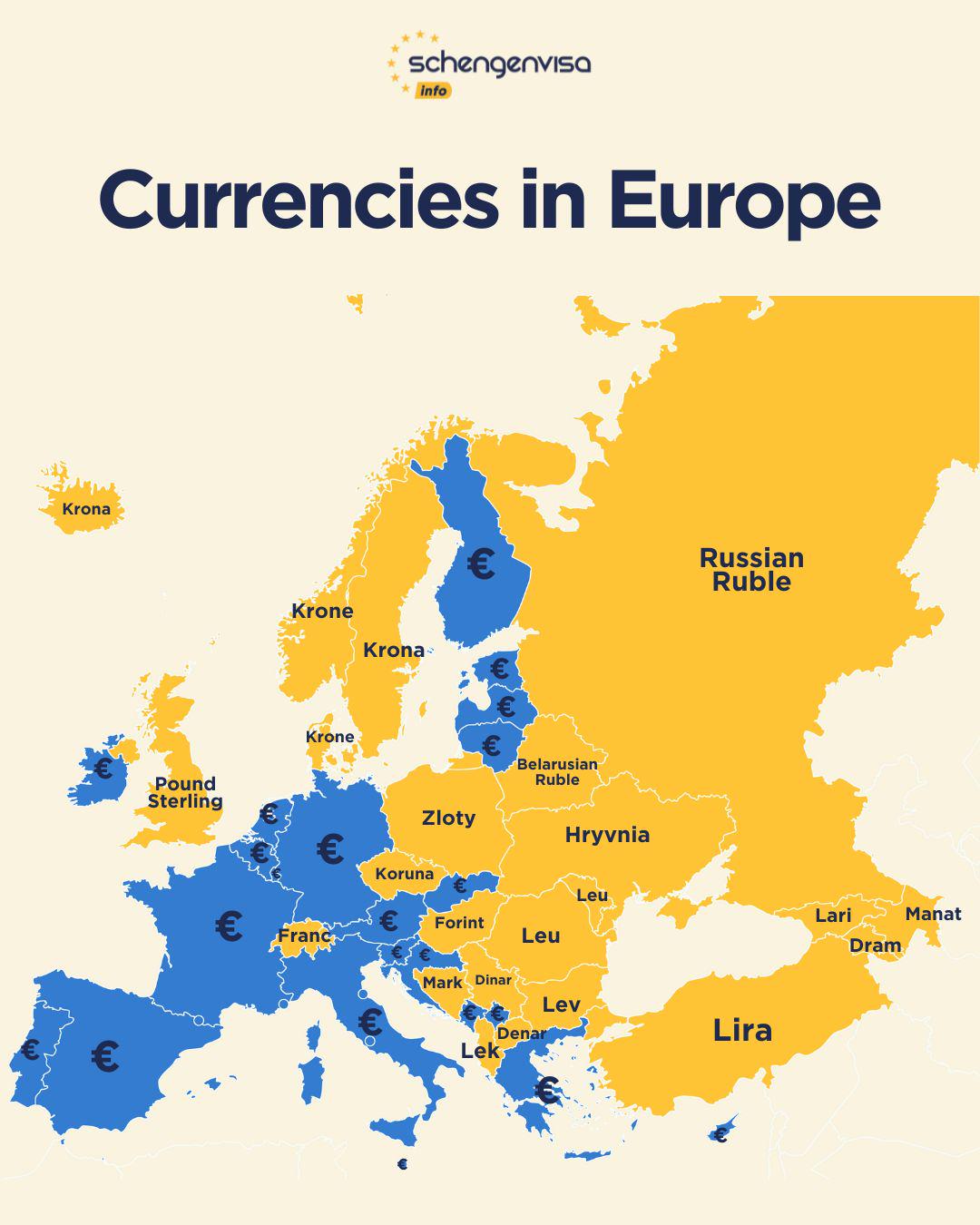

Alex Cartwright
Senior Cartographer & GIS Specialist
Alex Cartwright is a renowned cartographer and geographic information systems specialist with over 15 years of experience in spatial analysis and data...
Geographic Analysis
What This Map Shows
The "Currencies in Europe (2025)" map visualizes the various currencies used across European countries, highlighting how monetary systems differ throughout the continent. As we look ahead to 2025, it's essential to understand not just the currencies themselves but also the political and economic contexts that influence their use and stability. The map provides a clear picture of which countries have adopted the euro, which maintain their national currencies, and how this affects trade and travel.
Deep Dive into Currencies in Europe
The landscape of currencies in Europe is complex and often changing. As of 2025, the euro remains the most widely used currency in the European Union, adopted by 19 of the 27 member countries. Interestingly, the eurozone encompasses major economies like Germany, France, and Italy, which contribute significantly to the euro's strength. With a common currency, these nations benefit from reduced exchange rate risks and facilitate smoother trade.
However, not all European countries use the euro. For instance, the United Kingdom continues to use the British pound, a decision solidified after Brexit, which has led to unique economic implications. The pound's exchange rate has been notably volatile since the UK left the EU, reflecting the ongoing adjustments in trade relationships and market confidence. Countries like Sweden and Denmark also opt to retain their national currencies, the Swedish krona and the Danish krone, respectively, while maintaining close ties with the eurozone.
What’s fascinating is how the presence or absence of the euro influences business operations and tourism. Countries that use the euro often attract more tourists from other eurozone nations because travelers can avoid currency exchange hassles. Conversely, nations that use different currencies may experience a dip in tourism or trade due to perceived barriers.
Moreover, countries like Kosovo and Montenegro have unilaterally adopted the euro without being EU members, showcasing a trend where non-eurozone countries benefit from the euro’s stability while navigating their unique economic landscapes.
In addition to the euro and the pound, other currencies like the Swiss franc in Switzerland and the Hungarian forint in Hungary play crucial roles in their respective economies. The Swiss franc is known for its stability and is often seen as a safe-haven currency, especially during economic uncertainty. In contrast, the forint has experienced fluctuations influenced by Hungary's economic policies and its relationship with the EU.
Regional Analysis
When analyzing the various currencies across Europe, it's important to break down the regions. Western Europe, comprising countries like France, Germany, and Belgium, predominantly uses the euro. This region is often characterized by high economic interdependence, which is facilitated by a shared currency.
In Northern Europe, we find a mix of euro and non-euro countries. Finland uses the euro, while Sweden remains outside the eurozone. The differing currencies in this region reflect varying economic priorities; Sweden's cautious approach to euro adoption stems from a desire to maintain control over its monetary policy.
Eastern Europe presents an intriguing contrast. Here, countries like Poland and the Czech Republic have not adopted the euro, although they are EU members. The Czech koruna and Polish zloty remain the main currencies, reflecting an ongoing debate about the benefits and drawbacks of euro adoption. Economic stability, inflation rates, and public sentiment play significant roles in these nations' decisions.
Southern Europe, encompassing countries like Spain, Italy, and Greece, mainly uses the euro. However, these nations have faced economic challenges that have sparked discussions about the euro's viability. For example, Greece's financial crisis raised questions about the effectiveness of a shared currency amid national economic struggles.
Significance and Impact
Understanding the currency dynamics in Europe is crucial for several reasons. Firstly, currency stability impacts international trade, investment, and tourism. Fluctuating exchange rates can affect how businesses price goods and services, influencing consumer behavior and market competitiveness.
Furthermore, the ongoing debates about euro adoption among EU members highlight broader economic and political discussions regarding sovereignty versus economic integration. As countries weigh the benefits of joining the eurozone against the risks of losing monetary control, the implications extend beyond economics, touching upon national identity and governance.
Looking ahead, trends suggest that the eurozone may continue to expand, with countries like Hungary and Poland potentially reconsidering their positions. However, economic uncertainties, including inflation and regional economic disparities, will play a crucial role in shaping these decisions.
In summary, the "Currencies in Europe (2025)" map is not just a depiction of different monetary systems; it illustrates the intricate web of economic relationships and political choices that define Europe's present and future. As the continent navigates these complexities, the evolution of its currencies will remain a key factor in shaping its economic landscape.
Comments
Loading comments...